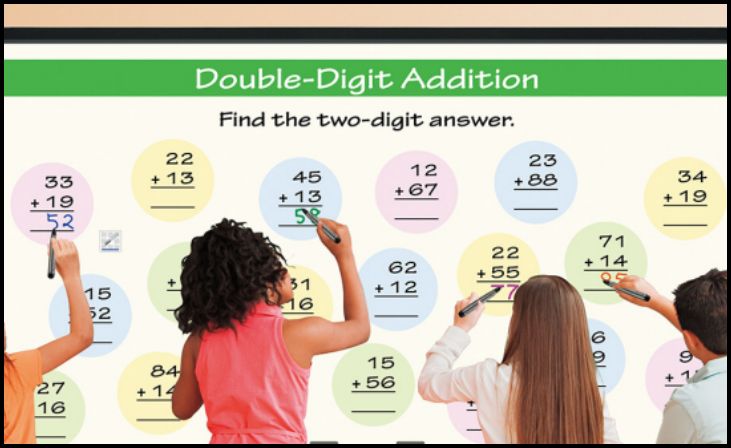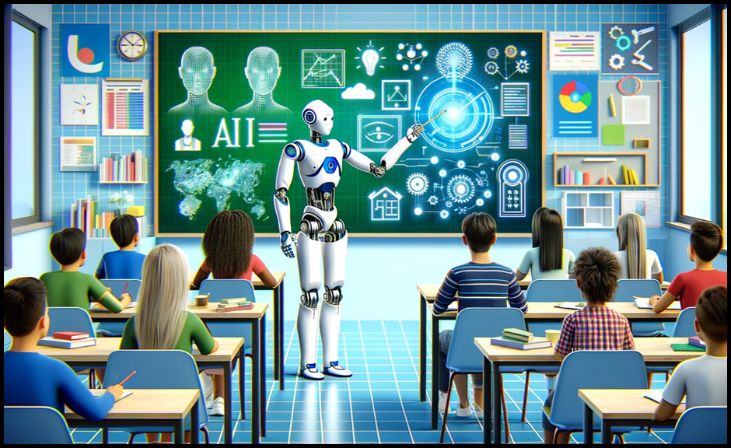The field of education is changing very quickly, and technology is a big part of making learning better. From interactive whiteboards to virtual reality simulations, classrooms today are integrating advanced technologies to engage students and improve learning outcomes. This blog explores the top 10 advanced technologies that are transforming the traditional classroom into a dynamic and interactive space for students and teachers alike. Discover how these innovative tools are reshaping the way we teach and learn, making education more engaging, personalized, and effective than ever before.
Top 10 Advanced Technologies For The Classroom
1. Interactive Whiteboards

Interactive whiteboards are large touch-sensitive displays that can be connected to a computer. They allow teachers to control and manipulate digital content using their fingers or a stylus. These boards enhance classroom interaction by enabling teachers to present lessons in a more engaging and dynamic manner. They also allow students to interact directly with the content, fostering a more collaborative learning environment. Interactive whiteboards can also be used to access online resources, display multimedia content, and facilitate real-time feedback, making them a versatile tool for modern classrooms.
Also Read:- Effective Online Course Development
2. Virtual Reality (VR)
Virtual reality technology immerses students in a simulated environment, providing a unique and engaging way to learn. By using VR headsets, students can explore virtual worlds, visit historical sites, or even travel through the human body. This technology can enhance students’ understanding of complex concepts by providing a more immersive and interactive learning experience. VR also allows students to engage in virtual experiments or simulations that would be impractical or impossible in a traditional classroom setting, making it a valuable tool for hands-on learning.
3. Augmented Reality (AR)
Augmented reality overlays digital content onto the real world, providing an interactive and engaging learning experience. AR applications can bring static images to life, overlay information onto physical objects, or provide virtual tours of historical sites. In education, AR can enhance students’ understanding of abstract concepts by providing visualizations and simulations that make learning more tangible and accessible. AR also encourages exploration and discovery, making it a valuable tool for promoting curiosity and engagement in the classroom.
4. Educational Robots
Educational robots are programmable devices designed to assist in the teaching and learning process. These robots can range from simple programmable toys to more advanced robots capable of complex tasks. In the classroom, educational robots can be used to teach programming and robotics concepts, as well as to facilitate collaborative learning activities. They can also be used to demonstrate scientific principles, such as physics or engineering concepts, in a hands-on and engaging way. Educational robots encourage creativity and problem-solving skills, making them a valuable addition to any modern classroom.
5. Adaptive Learning Software

Adaptive learning software uses artificial intelligence to personalize the learning experience for each student. These programs analyze students’ learning styles, preferences, and performance data to create customized learning paths. Adaptive learning software can adjust the difficulty level of questions, provide targeted feedback, and offer additional resources based on students’ individual needs. This personalized approach to learning can help students stay engaged and motivated, while also allowing teachers to track students’ progress more effectively.
6. Cloud Computing
Cloud computing allows users to access and store data and applications over the internet rather than on a local computer or server. In education, cloud computing can facilitate collaboration among students and teachers, as well as provide access to resources and tools from anywhere, at any time. Cloud-based applications can also streamline administrative tasks, such as grading and lesson planning, making them a valuable tool for teachers. Additionally, cloud computing can reduce the need for expensive hardware and software, making it a cost-effective solution for schools looking to modernize their classrooms.
7. 3D Printing
3D printing technology allows users to create physical objects from digital models by layering materials such as plastic or metal. In education, 3D printing can be used to create visual aids, models, and prototypes that enhance students’ understanding of complex concepts. For example, students can create 3D models of molecules, historical artifacts, or architectural structures, allowing them to explore and interact with these concepts in a tangible way. 3D printing also encourages creativity and problem-solving skills as students design and create their own objects.
8. Gamification
Gamification is the use of game design elements in non-game contexts, such as education, to engage and motivate students. By incorporating elements such as point systems, levels, and rewards into the learning process, teachers can make learning more enjoyable and engaging. Gamification can also foster a sense of competition and collaboration among students, encouraging them to participate in their learning actively. Additionally, gamification can provide immediate feedback to students, allowing them to track their progress and make improvements in real time.
9. Mobile Learning
Mobile learning, also known as m-learning, is the process of using phones and tablets to help with learning. Mobile devices offer flexibility and convenience, allowing students to access educational content anytime, anywhere. Mobile learning can take many forms, including educational apps, online courses, and interactive multimedia content. This approach to learning can cater to student’s individual learning styles and preferences, making it a valuable tool for personalized learning. Mobile learning also promotes collaboration and communication among students, as they can easily share resources and collaborate on projects using their mobile devices.
10. Artificial Intelligence (AI)

Artificial intelligence is a branch of computer science that aims to create machines that can perform tasks that typically require human intelligence, such as speech recognition, problem-solving, and learning. In education, AI can be used to create intelligent tutoring systems that adapt to students’ individual learning needs. These systems can provide personalized learning experiences, offer feedback, and track students’ progress over time. Automation of administrative tasks, like grading, can also be done with AI. This gives teachers more time to focus on more individualized lessons. Overall, AI has the potential to revolutionize education by making learning more personalized, efficient, and engaging.
Also Read:- Traits of Successful School Leaders
Conclusion
As technology continues to advance, the possibilities for enhancing classroom learning are endless. The top 10 advanced technologies discussed in this blog represent just a glimpse into the future of education. By embracing these innovative tools, educators can create immersive learning experiences that cater to students’ diverse needs. As we look ahead, it is clear that technology will play an increasingly integral role in shaping the future of education, empowering students to learn in ways that were once unimaginable.
FAQs
What are some examples of advanced classroom technologies?
Some examples include interactive whiteboards, augmented reality apps, educational robots, and adaptive learning software.
How can advanced technologies benefit students and teachers?
These technologies can enhance engagement, facilitate personalized learning, improve collaboration, and provide valuable data insights for educators to tailor their teaching methods.


Leave a Reply